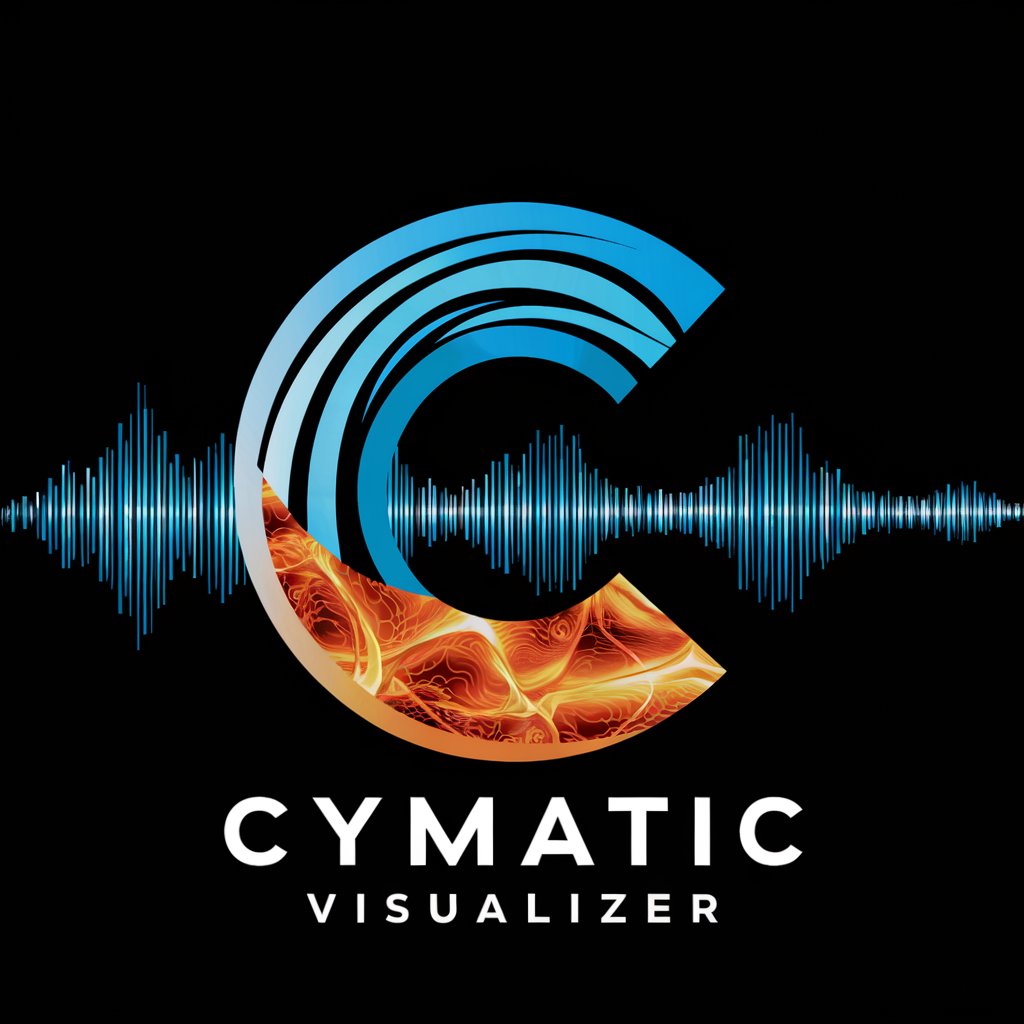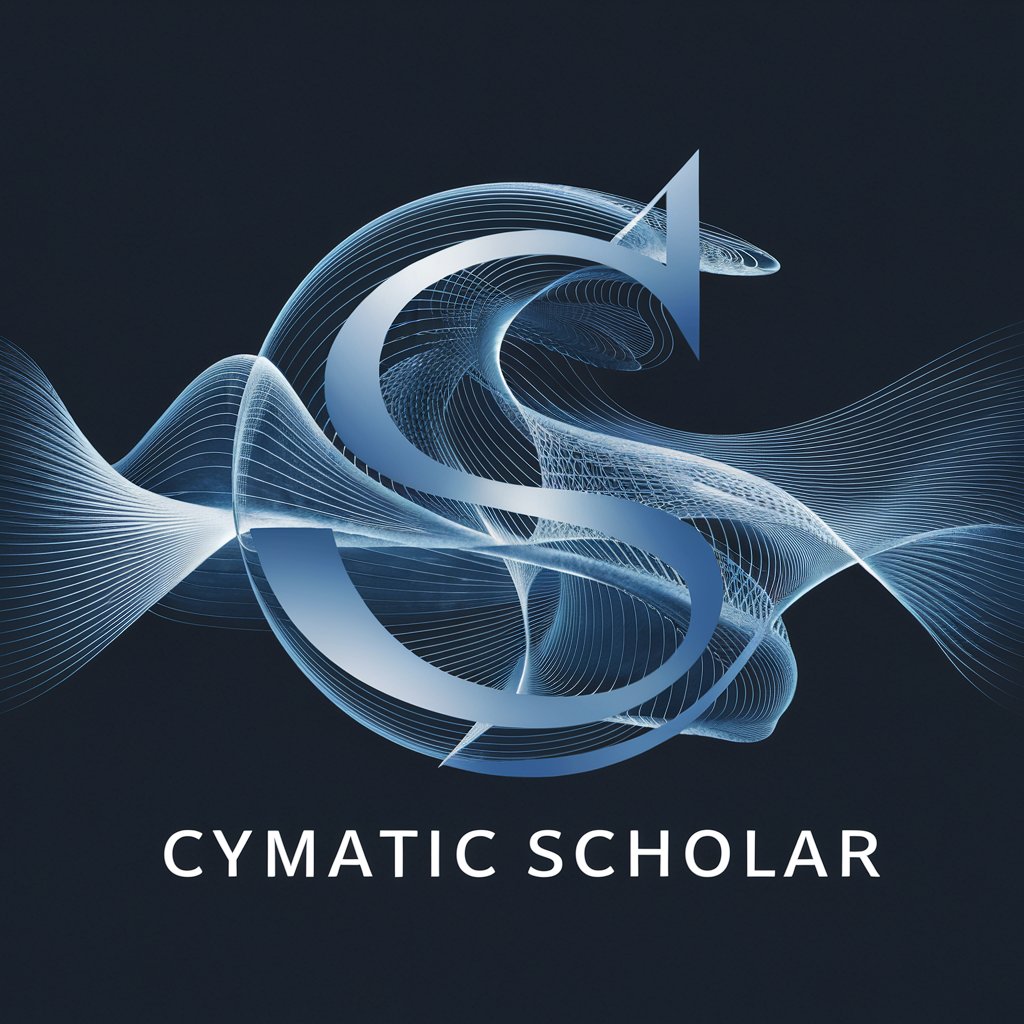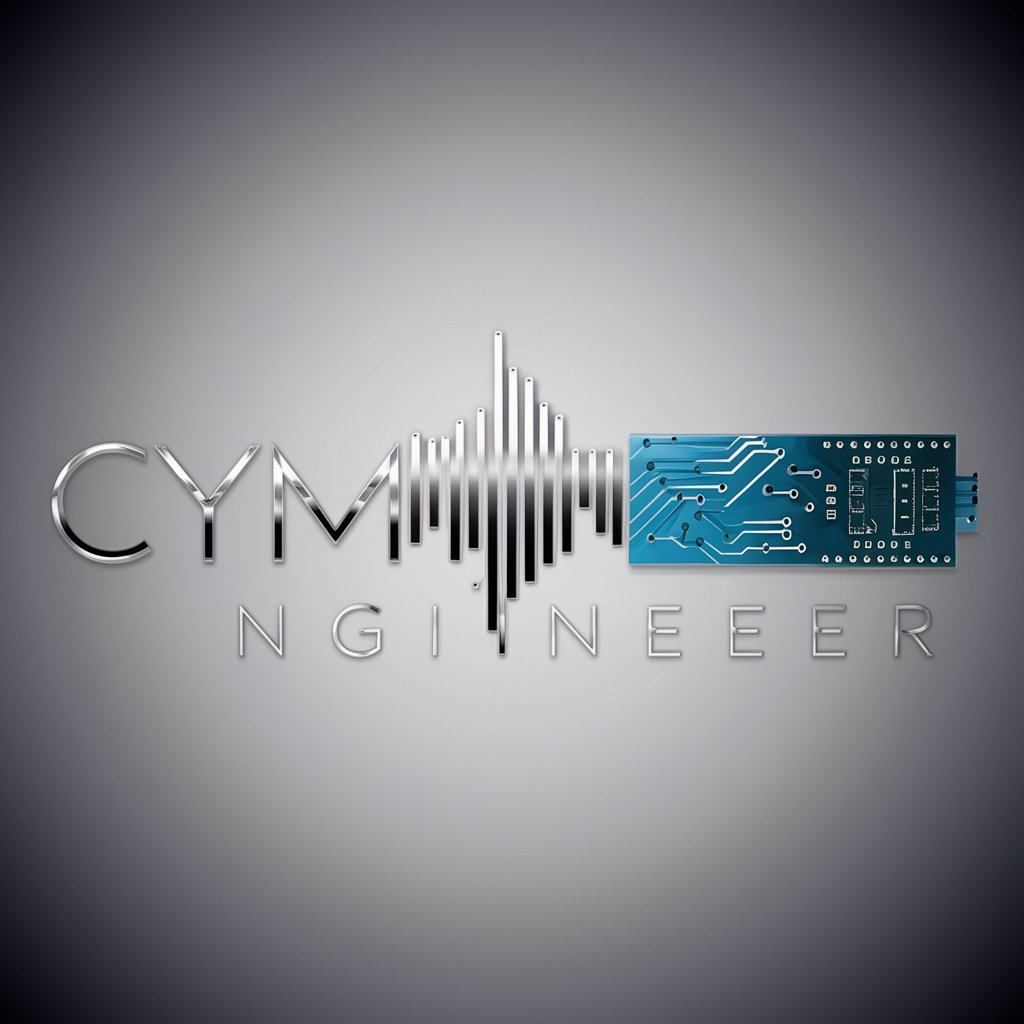Cymatic Visualizer - Text to Cymatic Visuals

Welcome to Cymatic Visualizer, where text meets art.
Visualizing Sound with AI
Visualize the text 'Harmony in Motion' as a cymatic image...
Generate a cymatic pattern based on the phrase 'Echoes of the Past'...
Create a cymatic visualization of the word 'Serenity'...
Transform the sentence 'Waves of Inspiration' into a cymatic design...
Get Embed Code
Overview of Cymatic Visualizer
The Cymatic Visualizer is a unique tool designed to transform textual input into cymatic images. Cymatics, the study of visible sound and vibration, serves as the foundation for this visualizer. When a user inputs text, the system converts this text into a corresponding sound wave, which is then visualized as a cymatic pattern. This process underscores the intrinsic connection between sound and visual forms, allowing for a novel way to perceive and interpret textual data. The Cymatic Visualizer is designed not just as a tool for artistic expression but also as a means to explore the deeper relationship between sound, language, and visual representation. Powered by ChatGPT-4o。

Core Functions of Cymatic Visualizer
Text-to-Cymatic Conversion
Example
Converting a poem into a cymatic image to visualize the rhythm and tone.
Scenario
A poet inputs their latest work into the Cymatic Visualizer. The generated cymatic image reveals unique patterns that correspond to the poem's rhythm, tone, and emotional intensity, providing a new perspective on the poetic composition.
Educational Tool
Example
Using cymatic images to teach students about the physics of sound waves.
Scenario
In a physics classroom, the teacher uses the Cymatic Visualizer to convert various sounds and words into visual representations. This helps students visually grasp concepts like frequency, amplitude, and wave interference, making abstract concepts more tangible and understandable.
Ideal Users of Cymatic Visualizer
Artists and Musicians
Artists and musicians can use the Cymatic Visualizer to explore the intersection of visual art and sound. For artists, it offers a new medium to express the unseen beauty of sound, while musicians can use it to visualize and possibly reinterpret their music or sounds in a visual format.
Educators and Students
Educators can leverage the Cymatic Visualizer as a teaching tool to illustrate the physical properties of sound in a more engaging and intuitive way. Students, on the other hand, can use it to deepen their understanding of sound physics and explore the relationship between sound and visual patterns, enhancing their learning experience.

How to Use the Cymatic Visualizer
Start with a free trial
Go to yeschat.ai to access a complimentary trial of the Cymatic Visualizer without the need to log in or subscribe to ChatGPT Plus.
Understand the interface
Familiarize yourself with the user interface. Look for options such as 'Input Text', 'Visualize', and 'Settings' to customize your visualization.
Input your text
Enter the text whose cymatic pattern you wish to visualize. The text can be anything from a single word to a full paragraph.
Generate visualization
Click on 'Visualize' to generate the cymatic image. The tool converts the input text into a sound wave, which is then visualized as a unique pattern.
Explore further
Experiment with different texts to see how various sounds influence the visual output. Use the tool for creative projects, educational purposes, or simply for visual entertainment.
Try other advanced and practical GPTs
Cymatic Scholar
Explore the Science of Sound with AI

Cymatic Engineer
Engineering sound waves with AI precision.

Practise a Language
AI-powered, personalized language practice.

Landscaper Pros
Elevate Your Garden with AI

Virtual League Pros
AI-powered creativity for branding

Chimney Pros
Elevate Your Chimney Care with AI

Resignation Writer
Seamless Resignation Letter Creation

ResignationGPT
Navigate Resignations with AI Confidence

Resignation Letter Creator
Craft Your Professional Goodbye with AI

Letters of Resignation Editor
Streamline Your Professional Goodbyes

I Quit
Resign with Respect, Powered by AI

Great Resignation
Crafting Thoughtful Farewell Messages with AI

Frequently Asked Questions About Cymatic Visualizer
What is Cymatic Visualizer?
Cymatic Visualizer is a tool that translates text into cymatic images, which represent the sound wave patterns generated by the spoken version of that text. It provides a unique visual representation of any verbal input.
Can I use Cymatic Visualizer for educational purposes?
Absolutely! Educators can use the Cymatic Visualizer to teach concepts related to sound waves, frequency, and vibration in a visually engaging way. It's also suitable for demonstrations in physics and music education.
What are the system requirements for using the Cymatic Visualizer?
The Cymatic Visualizer is web-based, so it requires only an internet connection and a modern browser. No special hardware is needed, making it accessible on most desktops and smart devices.
How accurate are the visualizations in Cymatic Visualizer?
The visualizations are based on standard models of sound wave propagation and are designed to accurately reflect the frequency and amplitude of the input text's potential sound waves.
Can the Cymatic Visualizer be used for performance art?
Yes, it's an excellent tool for artists and performers who want to integrate visual elements that respond to spoken word, poetry, or live music, creating a dynamic backdrop that interacts with the audio component.
